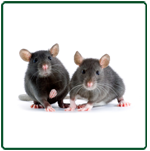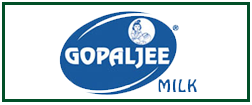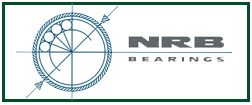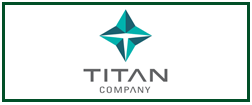|
 |
|
 The Mouse is the most commonly encountered and economically important rodent pest. They not only are a nuisance, but also damage and destroy materials by gnawing, eating, and contaminating stored food. They are also of human health importance as vectors of disease. Among the diseases mice or their parasites may transmit to humans are salmonellosis (food poisoning), rickettsialpox, and lymphocytic choriomeningitis. Mice may also carry leptospirosis, ratbite fever, tapeworms, and organisms that can cause ringworm (a fungal skin disease) in humans. Mice are common throughout the world. The Mouse is the most commonly encountered and economically important rodent pest. They not only are a nuisance, but also damage and destroy materials by gnawing, eating, and contaminating stored food. They are also of human health importance as vectors of disease. Among the diseases mice or their parasites may transmit to humans are salmonellosis (food poisoning), rickettsialpox, and lymphocytic choriomeningitis. Mice may also carry leptospirosis, ratbite fever, tapeworms, and organisms that can cause ringworm (a fungal skin disease) in humans. Mice are common throughout the world. |
|
Identification |
|
 |
Brown to gray in color with the tail as long as the body. |
 |
Adults weigh about 1/2 ounce. |
 |
Droppings are about 1/8 to 1/4 inch long and rod shaped. |
|
|
Management
|
|
 |
The structure should be thoroughly inspected for openings, which would or could, allow easy access. Holes should be plugged, patched, and sealed. |
 |
Depending on circumstance, rodent traps or bait may be utilized on the interior and/or exterior depending on the level of infestation, level of control needed, and level of prevention desired. |
 |
Control methods are selected depend on the findings during the inspection phase (generally, a combination of bait, glue boards, and/or traps). |
 |
Hygienic conditions to be maintained in the entire premises with good house keeping practices. |
|
|
|
|
| |
|
| |
|


 The Mouse is the most commonly encountered and economically important rodent pest. They not only are a nuisance, but also damage and destroy materials by gnawing, eating, and contaminating stored food. They are also of human health importance as vectors of disease. Among the diseases mice or their parasites may transmit to humans are salmonellosis (food poisoning), rickettsialpox, and lymphocytic choriomeningitis. Mice may also carry leptospirosis, ratbite fever, tapeworms, and organisms that can cause ringworm (a fungal skin disease) in humans. Mice are common throughout the world.
The Mouse is the most commonly encountered and economically important rodent pest. They not only are a nuisance, but also damage and destroy materials by gnawing, eating, and contaminating stored food. They are also of human health importance as vectors of disease. Among the diseases mice or their parasites may transmit to humans are salmonellosis (food poisoning), rickettsialpox, and lymphocytic choriomeningitis. Mice may also carry leptospirosis, ratbite fever, tapeworms, and organisms that can cause ringworm (a fungal skin disease) in humans. Mice are common throughout the world. 












